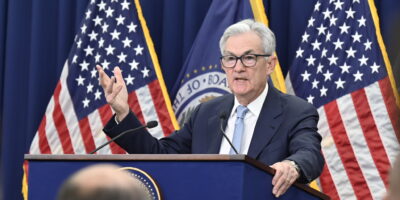Two Tales of Unintended Consequences of Monetary Policy – Tale 1
Even when a policy is successful in achieving its desired ends, we have to consider its unintended and unforeseen consequences, resulting from cumulative market adjustments to policy changes that make it hard to judge the overall outcome of a policy in our complex economy. The Federal Reserve and European Central Bank’s monetary policy responses to the 2008 financial crisis offer two tales of major unintended consequences. This post discusses the unintended outcomes of the U.S. Federal Reserve’s crisis policies. In our next post, we will address ECB policies.
TALE 1: THE U.S. FEDERAL RESERVE
One of the major challenges the Fed faced during the 2008 financial crisis, after Lehman was allowed to fail, was the loss of confidence in the financial markets and the resulting increase in money demand that led to a decline in the money multiplier. The scenario was even more delicate from the Fed’s perspective due to the presence of a number of financial institutions that the Fed considered too big to fail. To avoid bank runs that would make any bailout decision ineffective, the Fed decided to provide liquidity to the banking system via emergency lending operations on a large scale. Doing so, the Fed concealed which banks were insolvent and which were not. The Bernanke-Fed did not follow Bagehot’s principles in lending to solvent banks only. The monetary expansion required for this “bailout” strategy might have led to serious inflationary pressure. To avoid this outcome, the Fed adopted policies known from emerging markets central banks to limit the monetary expansion.
Offering interest on excess reserves (IOER), the Fed aimed to absorb surplus liquidity from the banking system via monetary policy operations on the liability side of its balance sheet. Banks that keep the newly created reserves at the Fed, rather than lending them out, receive an interest rate payment on these reserves. The new policy allowed for easy and safe bank profits, allowing the Fed to increase both the money supply and money demand (by the banks). The main intention of this policy design was to improve the liquidity situation of banks and prevent inflationary pressure. Although the Fed successfully dealt with liquidity problems, its policies backfired unintentionally along several lines: First, given the level of uncertainty, paying interest on excess reserves led to an increase in money demand of the banking system that exceeded the expectations of Fed policymakers. Banks began hoarding ever-increasing amounts of reserves at the Fed. Second, credit was not extended to businesses anymore. The artificial increase in money demand was even larger than the increase in base money.
According to market monetarist Scott Sumner, “the Fed, terrified of inflation, kept interest rates too high for too long—causing NGDP to fall even further.” If monetary policy had been expansionary overall, NGDP should have increased in 2008. Thus, Fed stimulus has not had the desired effects on consumption and investment. Indeed, the recovery from the financial crisis is among the slowest in U.S. economic history. Third, the Fed’s crisis policies, especially the lengthening of its balance sheet, complicate monetary policy today and in the near future. If investment opportunities arrive that are more attractive than holding reserves at the Fed, the Fed will have to increase interest on reserves (IOER), which may become costly, to prevent excessive credit creation, or allow banks to extend lending. A new credit boom might be the consequence in the latter scenario.
This commentary is cross-posted at Sound Money Project and ThinkMarkets










